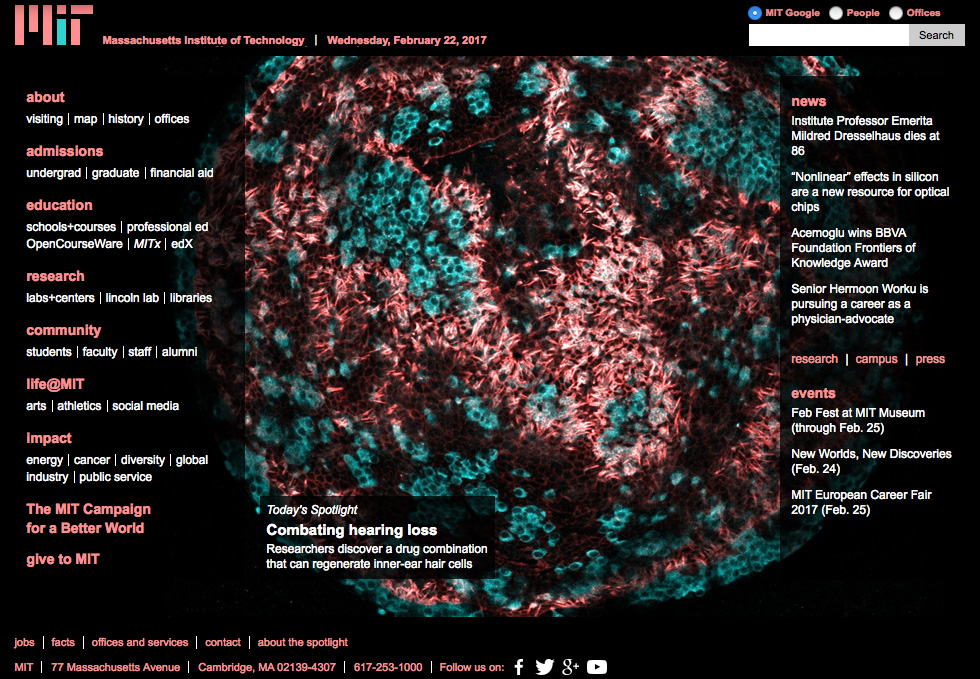Today’s Spotlight features an image, by Will MLean, Ph.D., of large clonal colonies of cochlear progenitor cells formed from single cells and converted into high-purity colonies of hair cells (cyan) with intricate hair bundles (red).
Within the inner ear, thousands of hair cells detect sound waves and translate them into nerve signals that allow us to hear speech, music, and other everyday sounds. Damage to these cells is one of the leading causes of hearing loss, which affects 48 million Americans.
Read the full story on MIT News.
Within the inner ear, thousands of hair cells detect sound waves and translate them into nerve signals that allow us to hear speech, music, and other everyday sounds. Damage to these cells is one of the leading causes of hearing loss, which affects 48 million Americans.
Read the full story on MIT News.




